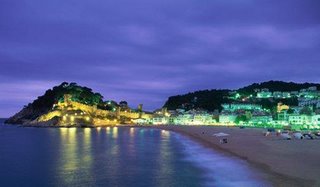 Christmas is a very religious holiday in Spain. The Spain's patron saint is the Virgin Mary and the Christmas season officially begins December 8, the feast of the Immaculate Conception. Each year it is celebrated in front of the great Gothic cathedral in Seville with a ceremony called los Seises or the "dance of six." The elaborate ritual dance is performed by ten costumed boys; the dance is said to be quite moving and beautiful. It is made up of a series of precise traditional movements and gestures.
Christmas is a very religious holiday in Spain. The Spain's patron saint is the Virgin Mary and the Christmas season officially begins December 8, the feast of the Immaculate Conception. Each year it is celebrated in front of the great Gothic cathedral in Seville with a ceremony called los Seises or the "dance of six." The elaborate ritual dance is performed by ten costumed boys; the dance is said to be quite moving and beautiful. It is made up of a series of precise traditional movements and gestures.Christmas Eve is known as Nochebuena or "the Good Night." As the stars come out on Christmas Eve, tiny oil lamps are lit in every house. Family members gather together to rejoice and feast around the Nativity scenes, complete with carved figures, that are present in nearly every home. The traditional Christmas treat is turron, a kind of almond candy. After Midnight Mass and Christmas Dinner the streets fill with dancers and onlookers. There is a special Christmas dance called the Jota and the words and music of which have been handed down for hundreds of years. The dance is accompanied by the sound of guitars and castanets.
The Spanish especially honour the cow at Christmas. This is because it is thought that when Mary gave birth to Jesus, the cow in the stable breathed on the Baby Jesus to keep him warm. The Spanish Christmas is Navidad, people go to church, exchange presents, and many play on swing sets set up especially for the occasion. Swinging at solstice time evokes an ancient desire to encourage the sun, urging it to "swing" ever higher in the sky. December 28 is the feast of the Holy Innocents. Young boys of a town or village light bonfires while one of them acts as the mayor who orders the townspeople to perform civic chores such as sweeping the streets. If you refuse to comply fines are levied which are then used to pay for the celebration.
The children of Spain receive gifts on the feast of the Epiphany, January 6th, the date the Three Wise Men gave gifts to Jesus. The Magi are particularly revered in Spain. It is believed that they travel through the countryside re-enacting their journey to Bethlehem every year at this time.
On the 'Eve of The Kings', a parade takes place in each town centre. The locals dress as kings and walk through the towns, throwing sweets and gifts to the children watching. The Kings (Los Reyes), are the highlight of each child's Christmas and they write a gift list to 'The Kings' rather than Father Christmas, leaving food and drink out for them to enjoy while delivering the children's presents. Children leave their shoes on the windowsills and fill them with straw, carrots or barley for the horses of the Wise Men. By morning the camel food is gone and in place of the straw, carrots or barley are presents. Their favourite Wise Man is Balthazar who rides a donkey and is the one believed to leave the gifts.
No comments:
Post a Comment